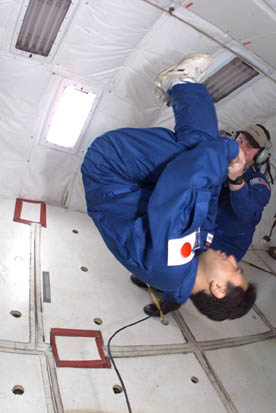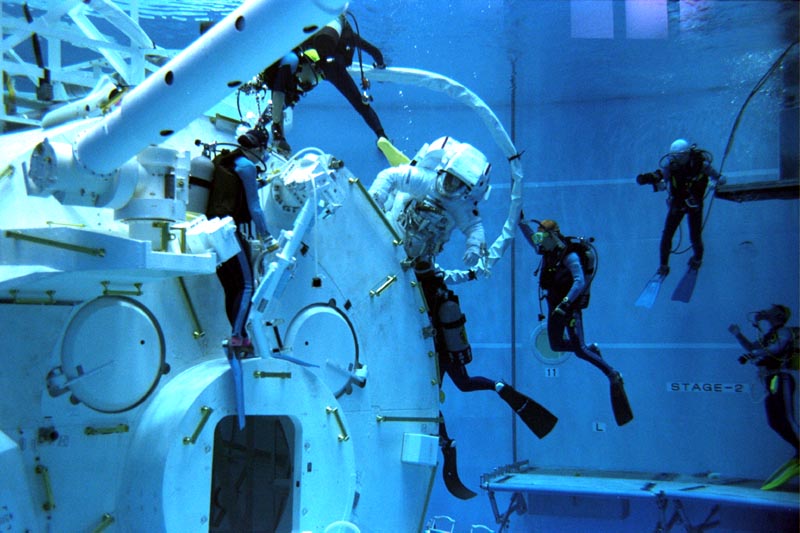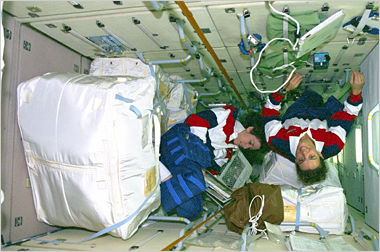|
|
|
|
|
Traveling in space can cause "Space Sickness," which is very like being car sick. Although space sickness gets better within a few days, it causes headaches and sleepiness. After some time, the face becomes pale, nausea sets in and, in really bad cases, some may vomit severely. Space sickness can suddenly strike, causing some astronauts to vomit without any warning. Researchers believe that weightlessness causes some astronauts to lose their sense of what is "up" and what is "down." While in the 1-G environment of Earth, the eyes, the inner ear and other body parts, such as muscles, bones or skin, provide the body with the information it needs to cope adequately and maintain itself in the area it is in. But in a weightless environment, the information that reaches the ears, muscles and skin is not stable and the only organ that functions properly in terms of receiving information is the eyes. Astronauts lose their sense of knowing exactly where they are.
|


